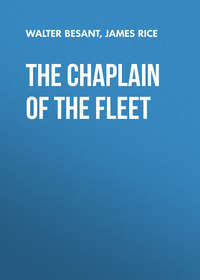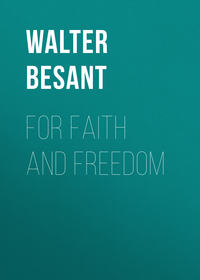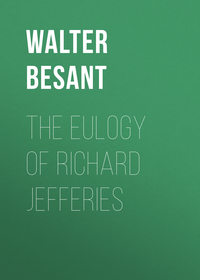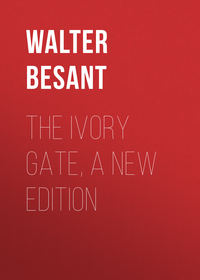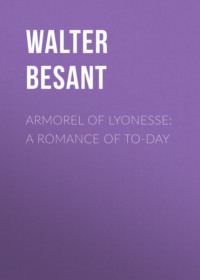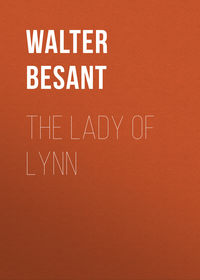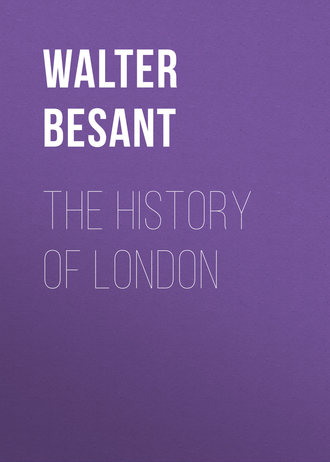 полная версия
полная версияThe History of London
Let us examine into the history and the course of the Wall of London, if only for the very remarkable facts that the boundary of the City was determined for fifteen hundred years by the erection of this Wall; that for some purposes the course of the Wall still affects the government of London; and that it was only pulled down bit by bit in the course of the last century.
You will see by reference to the map what was the course of the Wall. It began, starting from the east where the White Tower now stands. Part of the foundation of the Tower consists of a bastion of the Roman wall. It followed a line nearly north as far as Aldgate. Then it turned in a N.W. direction just north of Camomile Street and Bevis Marks to Bishopsgate. Thence it ran nearly due W., north of the street called London Wall, turning S. at Monkwell Street. At Aldersgate it turned W. until it reached Newgate, where it turned nearly S. again and so to the river, a little east of the present Blackfriars Bridge. It ran, lastly, along the river bank to join its eastern extremity. The river wall had openings or gates at Dowgate and Bishopsgate, and probably at Queen Hithe. The length of the Wall, without counting the river side, was 2 miles and 608 feet.
This formidable Wall was originally about 12 feet thick made of rubble and mortar, the latter very hard, and faced with stone. You may know Roman work by the courses of tiles or bricks. They are arranged in double layers about 2 feet apart. The so-called bricks are not in the least like our bricks, being 6 inches long, 12 inches wide and 1½ inch thick. The Wall was 20 feet high, with towers and bastions at intervals about 50 feet high. At first there was no moat or ditch, and it will be understood that in order to protect the City from an attack of barbarians – Picts or Scots – it was enough to close the gates and to man the towers. The invaders had no ladders.
In the course of centuries a great many repairs and rebuildings of the Wall took place. The Saxons allowed it to fall into a ruinous condition. Alfred rebuilt it and strengthened it. The next important repairs were made in the reign of King John in 1215, by Henry III., Edward I., Edward II., Edward III., Richard II., Edward IV. After these various rebuildings there would seem to be little left of the original Wall. That, however, a great part of it continued to be the hard rubble core of the Roman work seems evident from the fact that the course of the Wall was never altered. The only alteration was when they turned the Wall west at Ludgate down to the Fleet River and so to the confluence of the Fleet and the Thames. The river side of the Wall was also allowed to be removed.
The City was thus protected by a great wall pierced by a few gates, with bastions and towers. At the East End after the Norman Conquest rose the Great White Tower still standing. At the West End was a tower called Montfichet's Tower.
But a wall without a ditch, where a ditch was possible, became of little use as soon as scaling ladders were invented with wooden movable towers and other devices. A ditch was accordingly constructed in the year 1211 in the reign of King John. It appears to have been from the very first neglected by the citizens, who trusted more to their own bravery than to the protection of a ditch. It was frequently ordered to be cleansed and repaired: it abounded, when it was clean, with good fish of various kinds: but it was gradually allowed to dry up until, in the reign of Queen Elizabeth, nothing was left but a narrow channel or no channel at all but a few scattered ponds, with market gardens planted in the ditch itself. In Agas's map of London these gardens are figured, with summer houses and cottages for the gardeners and cattle grazing. On the west side north of Ludgate the ditch has entirely disappeared and houses are built against the Wall on the outside. Houndsditch is a row of mean houses facing the moat. Fore Street is also built over against the moat. Within and without the Wall they placed churchyards – those of St. Alphege, Allhallows, and St. Martin's Outwich, you may still see for yourselves within the Wall: that of St. Augustine's at the north end of St. Mary Axe, has vanished. Those of the three churches of St. Botolph, Bishopsgate, Aldgate, Aldersgate, and that of St. Giles are churchyards without the Wall. Then the ditch became filled up and houses were built all along the Wall within and without. Thus began unchecked, perhaps openly encouraged, the gradual demolition of the Wall. It takes a long time to tear down a wall of solid rubble twelve feet thick. It took the Londoners about 160 years. In the year 1760 they finally removed the gates. Most of the Wall was gone by this time but large fragments remained here and there. You may still see a considerable piece, part of a bastion in the churchyard of St. Giles, and the vestry of All Hallows on the Wall is built upon a bastion. In Camomile Street and in other places portions of the Wall have been discovered where excavations have been made: and, of course, the foundation of the Wall exists still, from end to end.
12. NORMAN LONDON
When William the Conqueror received the submission of the City he gave the citizens a Charter – their first Charter – of freedom. There can be no doubt that the Charter was the price demanded by the citizens and willingly paid by the Conqueror in return for their submission. The following is the document. Short as it is, the whole future of the City is founded upon these few words: —
'William King greets William Bishop and Gosfrith Portreeve and all the burghers within London, French and English, friendly.
'I do you to wit that I will that ye be all law worthy that were in King Edward's day, and I will that every child be his father's heir after his father's day: and I will not endure that any man offer any wrong to you.
'God keep you.'
The ancient Charter itself is preserved at Guildhall. Many copies of it and translations of it were made from time to time. Let us see what it means.
The citizens were to be 'law worthy' as they had been in the days of King Edward. This meant that they were to be free men in the courts of justice, with the right to be tried by their equals, that is, by jury. 'All who were law worthy in King Edward's day.' Serfs were not law worthy, for instance. That the children should inherit their father's property was, as much as the preceding clause, great security to the freedom of the City, for it protected the people from any feudal claims that might arise. Next, observe that there was never any Earl of London: the City had no Lord but the King: it never would endure any Lord but the King. An attempt was made, but only one, and that was followed by the downfall of the Queen – Matilda – who tried it. Feudal customs arose and flourished and died, but they were unknown in this free city.
But the City with its strong walls, its great multitude of people, and its resources, might prove so independent as to lock out the King. William therefore began to build the Tower, by means of which he could not only keep the enemy out of London but could keep his own strong hand upon the burghers. He took down a piece of the wall and enclosed twelve acres of ground, in which he built his stronghold, within a deep and broad ditch. The work was entrusted to Gundulph, Bishop of Rochester, who left it unfinished when he died thirty years after.
The next great Charter of the City was granted by Henry the First. He remitted the payment of the levies for feudal service, of tax called Danegeld, originally imposed for buying off the Danes: of the murder tax: of wager of battle, that is, that form of trial in which the accused and the accuser fought it out, and from certain tolls. He also gave the citizens the county of Middlesex to farm on payment to the Crown of 300l. a year – a payment still made: they were to appoint a Sheriff for the county: and they were to have leave to hunt in the forests of Middlesex, Surrey, and the Chiltern Hills. They were also empowered to elect their own justiciar and allowed to try their own cases within their own limits.
This was a very important Charter. No doubt, like the first, it was stipulated as a price for the support of the City. William Rufus was killed on Thursday – Henry was in London on Saturday. He must therefore have ridden hard to get over the hundred and twenty miles of rough bridle track between the New Forest and London. But the City supported him and this was their reward.
We are gradually approaching the modern constitution of the City. The Portreeve or first Magistrate, in the year 1189, in the person of Henry Fitz Aylwin, assumed the title of Mayor – not Lord Mayor: the title came later, a habit or style, never a rank conferred. With him were two Sheriffs, the Sheriff of the City and the Sheriff of the County. There was the Bishop: there was the City Justiciar with his courts. There were also the Aldermen, not yet an elected body.
The Londoners elected Stephen King, and stood by him through all the troubles that followed. The plainest proof of the strength and importance of the City is shown in the fact that when Matilda took revenge on London by depriving the City of its Charters the citizens rose and drove her out of London and made her cause hopeless.
13. FITZSTEPHEN'S ACCOUNT OF THE CITY
PART IThe White Tower is the only building in modern London which belongs to Norman London. Portions remain – fragments – a part of the church of St. Bartholomew the Great, a part of the church of St. Ethelburga, the crypt of Bow Church: very little else. All the rest has been destroyed by time, by 'improvements,' or by fire, the greatest enemy to cities in every country and every age. Thus, three great fires in the tenth and eleventh century swept London from end to end. No need to ask if anything remains of the Roman or the Saxon City. Not a vestige is left – except the little fragment, known as the London Stone, now lying behind iron bars in the wall of St. Swithin's Church. Churches, Palaces, Monasteries, Castles – all perished in those three fires. The City, no doubt, speedily sprang again from its ashes, but of its rebuilding on each occasion we have no details at all.
Most fortunately, there exists a document priceless and unique, short as it is and meagre in many of its details, which describes London as it was in the reign of Henry II. It is written by one FitzStephen, Chaplain to Thomas Becket. He was present at the murder of the Archbishop and wrote his life, to which this account is an introduction.
He says, first of all, that the City contained thirteen larger conventual churches and a hundred and twenty-six parish churches. He writes only fifty years after the Great Fire, so that it is not likely that new parishes had been erected. All the churches which had been destroyed were rebuilt. Most of them were very small parishes, with, doubtless, very small churches. We shall return presently to the question of the churches.
On the east was the White Tower which he calls the 'Palatine Castle:' on the west there were two towers – there was the Tower called Montfichet, where is now Blackfriars station, and Baynard's Castle, close beside it. The walls of the City had seven double gates. The river wall had by this time been taken down. Two miles from the City, on the west, was the Royal Palace (Westminster), fortified with ramparts and connected with the City by a populous suburb. Already, therefore, the Strand and Charing Cross were settled. The gates were Aldgate, Bishopsgate, Cripplegate, Aldersgate, Newgate, Ludgate, and the Bridge.
FitzStephen says that the citizens were so powerful that they could furnish the King with 20,000 horsemen and 60,000 foot. This is clearly gross exaggeration. If we allow 500 for each parish, we get a population of only 63,000 in all, and in the enumeration later on, for the poll tax by Richard the Second, there were no more than 48,000. This, however, was shortly after a great Plague had ravaged the City.
But the writer tells us that the citizens excelled those of any other city in the world in 'handsomeness of manners and of dress, at table, and in way of speaking.' There were three principal schools, the scholars of which rivalled each other, and engaged in public contests of rhetoric and grammar.
Those who worked at trades and sold wares of any kind were assigned their proper place whither they repaired every morning. It is easy to make out from the surviving names where the trades were placed. The names of Bread Street, Fish Street, Milk Street, Honey Lane, Wood Street, Soapers' Lane, the Poultry, for instance, indicate what trades were carried on there. Friday Street shows that the food proper for fast days was sold there – namely, dried fish. Cheapside preserves the name of the Chepe, the most important of all the old streets. Here, every day, all the year round, was a market held at which everything conceivable was sold, not in shops, but in selds, that is, covered wooden sheds, which could be taken down on occasion. Do not think that 'Chepe' was a narrow street: it was a great open space lying between St. Paul's and what is now the Royal Exchange, with streets north and south formed by rows of these selds or sheds. Presently the sheds became houses with shops in front and gardens behind. The roadway on the south side of this open space was called the Side of Chepe. There was another open space for salesmen called East Chepe, another at Billingsgate, called Roome Lane, another at Dowgate – both for purposes of exposing for sale imports landed on the Quays and the ports of Queenhithe and Billingsgate. Those who have seen a market-place in a French town will understand what these places were like. A large irregular area. On every side sheds with wares for sale: at first all seems confusion and noise: presently one makes out that there are streets in orderly array, in which those who know can find what they want. Here are mercers; here goldsmiths; here armourers; here glovers; here pepperers or grocers; and so forth. West Chepe is the place of shops where they sell the things made in the City and all things wanted for the daily life.
On the other side of the Walbrook, across which there is a bridge where is now the Poultry, is East Chepe, whither they bring all kinds of imported goods and sell them to the retailers: and by the river side the merchants assemble in the open places beside Queenhithe and Billingsgate to receive or to buy the cargoes sent over from France, Spain, and the Low Countries. One more open space there was, that round St. Paul's, the place where the people held their folkmotes. But London was not, as yet, by any means built over. Its northern parts were covered with gardens. It was here, as we shall see, that the great monasteries were shortly to be built.
14. FITZSTEPHEN'S ACCOUNT OF THE CITY
PART IIOutside the walls, he says, there were many places of pleasant resort, streams and springs among them. He means the Fleet River winding at the bottom of its broad valley: farther west Tyburn and Westbourne: on the south the Wandle, the Effra, the Ravensbourne. There was a well at Holywell in the Strand – it lies under the site of the present Opéra Comique Theatre: and at Clerkenwell: these wells had medicinal or miraculous properties and there were, no doubt, taverns and places of amusement about there. At Smithfield – or Smooth Field – just outside the City walls, there was held once a week – on Friday – a horse fair. Business over, horse racing followed. Then the river was full of fish: some went fishing for their livelihood: some for amusement: salmon were plentiful and great fish such as porpoises sometimes found their way above Bridge.
Then there were the sports of the young men and the boys. They played at ball – when have not young men played at ball? The young Londoners practised some form of hockey out of which have grown the two noble games of cricket and golf. They wrestled and leaped. Nothing is said about boxing and quarterstaff. But perhaps these belonged to the practice of arms and archery, which were never neglected, because at any moment the London craftsman might have to become a soldier. They had cock fighting, a sport to which the Londoner was always greatly addicted. And they loved dancing with the girls to the music of pipe and tabor. In the winter, when the broad fens north of the walls were frozen, they skated. And they hunted with hawk and hound in the Forest of Middlesex, which belonged to the City.
The City, he tells us, is governed by the same laws as those of Rome. Like Rome, London is divided into wards: like Rome the City has annually elected magistrates who are called Sheriffs instead of Consuls: like Rome it has senatorial and inferior magistrates: like Rome it has separate Courts and proper places for law suits, and like Rome the City holds assemblies on ordered days. The writer is carried away by his enthusiasm for Rome. As we have seen, the government, laws, and customs of London owed nothing at all, in any single respect, to Rome. Everything grew out of the Anglo-Saxon laws and customs.
By his loud praise of the great plenty of food of every kind which could be found in London, FitzStephen reminds us that he has lived in other towns, and especially in Canterbury, when he was in the service of the Archbishop. We see, though he does not mention it, the comparison in his mind between the plentiful market of London and the meagre market of Canterbury. Everything, he says, was on sale. All the roasted meats and boiled that one can ask for; all the fish, poultry, and game in season, could every day be bought in London: there were cookshops where dinners and suppers could be had by paying for them. He dwells at length upon this abundance. Now in the country towns and the villages the supplies were a matter of uncertainty and anxiety: a housewife had to keep her pantry and her larder well victualled in advance: salt meat and salt fish were the staple of food. Beef and mutton were scarce: game there was in plenty if it could be taken; but game laws were strict; very little venison would find its way into Canterbury market. To this cleric who knew the country markets, the profusion of everything in London was amazing.
Another thing he notices – 'Nearly all the Bishops, Abbots, and Magnates of England are, as it were, citizens and freemen of London; having their own splendid houses to which they resort, where they spend largely when summoned to great Councils by the King, or by their Metropolitan, or drawn thither by their own private affairs.'
In another century or two London will become, as you shall see, a City of Palaces. Observe that the palaces are already beginning. Observe, also, that London is already being enriched by the visits and residence of great lords who, with their retinues, spend 'largely.' Down to the present day the same thing has always gone on. The wealthy people who have their town houses in the West End of London and the thousands of country people and foreigners who now flock to the London hotels are the successors of the great men and their following who came up to London in the twelfth century and spent 'largely.'
'I do not think,' says FitzStephen, 'that there is any city with more commendable customs of church attendance, honour to God's ordinances, keeping sacred festivals, almsgiving, hospitality, confirming, betrothals, contracting marriages, celebration of nuptials, preparing feasts, cheering the guests, and also in care for funerals and the interment of the dead. The only pests of London are the immoderate drinking of fools and the frequency of fires.'
15. LONDON BRIDGE
PART INobody knows who built the first Bridge. It was there in the fourth century – a bridge of timber provided with a fortified gate, one of the gates of the City. Who put it up, and when – how long it stood – what space there was between the piers – how broad it was – we do not know. Probably it was quite a narrow bridge consisting of beams laid across side by side and a railing at the side. That these beams were not close together is known by the fact that so many coins have been found in the bed of the river beneath the old Bridge.
Besides the Bridge there were ferries across the river, especially between Dowgate and the opposite bank called St. Mary Overies Dock, where was afterwards erected St. Mary Overies Priory, to which belonged the church now called St. Saviour's, Southwark. The docks at either end of the old ferry still remain.
The Bridge had many misfortunes: it is said to have been destroyed by the Danes in 1013. Perhaps for 'destruction' we should read 'damage.' It was, however, certainly burned down in the Great Fire of 1136. Another, also of wood, was built in its place and, in the year 1176, a bridge of stone was commenced, which took thirty years to build and remained standing till the year 1831, when the present Bridge was completed and the old one pulled down.
The Architect of this stone Bridge, destined to stand for six hundred and fifty years, was one Peter, Chaplain of St. Mary Colechurch in the Old Jewry (the church was destroyed in the Great Fire and not rebuilt).
Now the building of bridges was regarded, at this time, as a work of piety. If we consider how a bridge helps the people we shall agree with our forefathers. Without a bridge, those living on one side of a river can only carry on intercourse with those on the other side by means of boats. Merchants cannot carry their wares about: farmers cannot get their produce to market: wayfarers can only get across by ferry: armies cannot march – if you wish to follow an army across a country where there are no bridges you must look for fords. Roads are useless unless bridges cross the rivers. The first essential to the union of a nation is the possibility of intercommunication: without roads and bridges the man of Devon is a stranger and an enemy to the man of Somerset. We who have bridges over every river: who need never even ford a stream: who hardly know what a ferry means: easily forget that these bridges did not grow like the oaks and the elms: but were built after long study of the subject by men who were trained for the work just as other men were trained and taught to build cathedrals and churches. A religious order was founded in France in the twelfth century: it was called the Order of the 'Pontife' Brethren —Pontife is Pontifex – that is – Bridge Builder. The Bridge Building Brothers constructed many bridges in France of which several still remain. It is not certain that Peter of Colechurch was one of this Brotherhood, perhaps not. When he died, in 1205, before the Bridge was completed, King John called over a French 'Pontife' named Isembert who had built bridges at La Rochelle and Saintes. But the principal builders are said to have been three merchants of London named Serle Mercer, William Almain, and Benedict Botewrite. The building of the Bridge was regarded as a national work: the King: the great Lords: the Bishops: as well as the London Citizens, gave money to hasten its completion. The list of donors was preserved on 'a table fair written for posterity' in the Chapel on the Bridge. It was unhappily destroyed in the Great Fire.
It must not be supposed that the Bridge of Peter Colechurch was like the present stately Bridge of broad arches. It contained twenty arches of irregular breadth: only two or three being the same: they varied from 10 feet to 32 feet: some of them therefore were very narrow: the piers were also of different lengths. These irregularities were certainly intentional and were based upon some observations on the rise and fall of the tide. No other great Bridge had yet been constructed across a tidal river.
When the Bridge was built it was thought necessary to consecrate it to some saint. The latest saint, St. Thomas Becket, was chosen as the titular saint of this Bridge. A chapel, dedicated to him, was built in the centre pier of the Bridge: it was, in fact, a double chapel: in the lower part, the crypt, was buried Peter of Colechurch himself: the upper part, which escaped the Great Fire, became, after the Reformation, a warehouse.
16. LONDON BRIDGE
PART IIHouses were erected in course of time along the Bridge on either side like a street, but with intervals; and along the roadway in the middle were chain posts to protect the passengers. As the Bridge was only 40 feet wide the houses must have been small. But they were built out at the back overhanging the river, and the roadway itself was not intended for carts or wheeled vehicles. Remember that everything was brought to the City on pack horse or pack ass. The table of Tolls sanctioned by King Edward I. makes no mention of cart or waggon at all. Men on horseback and loaded horses can get along with a very narrow road. Perhaps we may allow twelve feet for the road which gives for the houses on either side a depth of 14 feet each.




